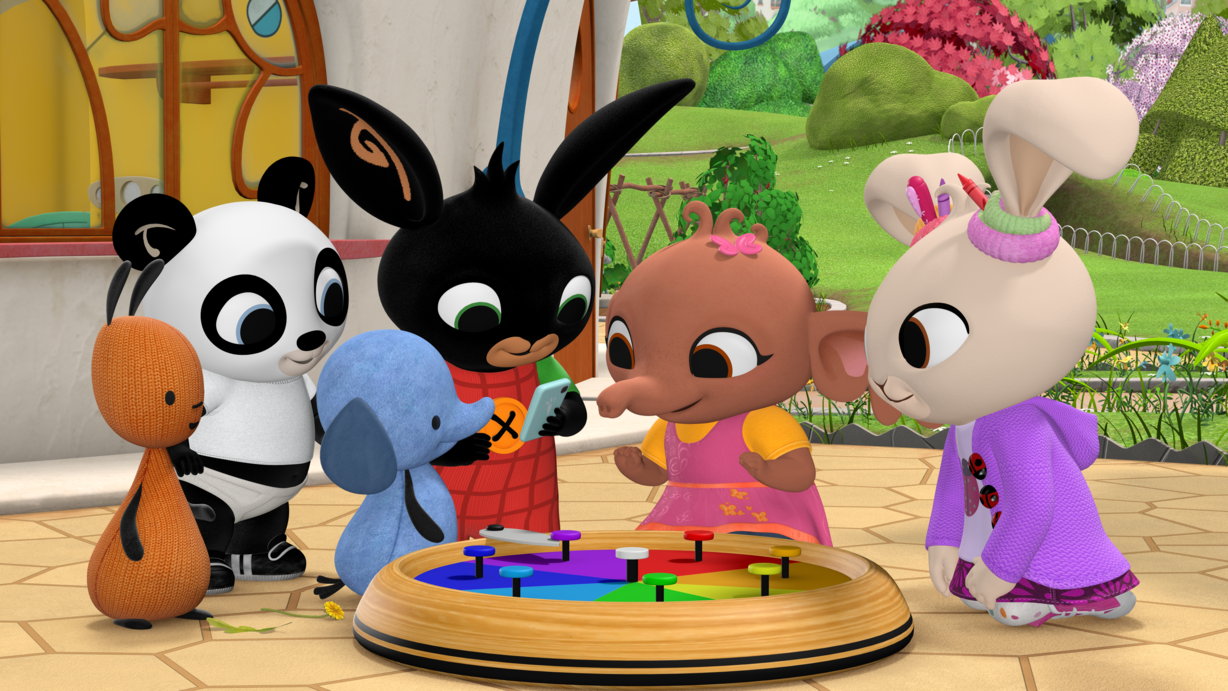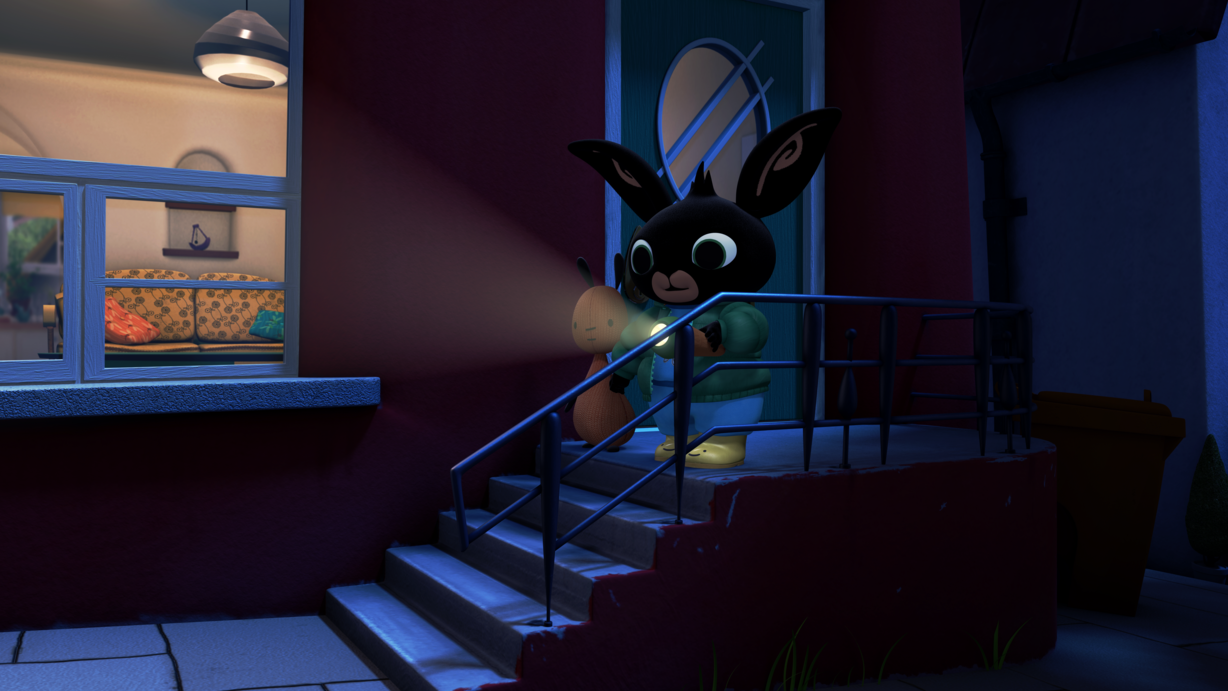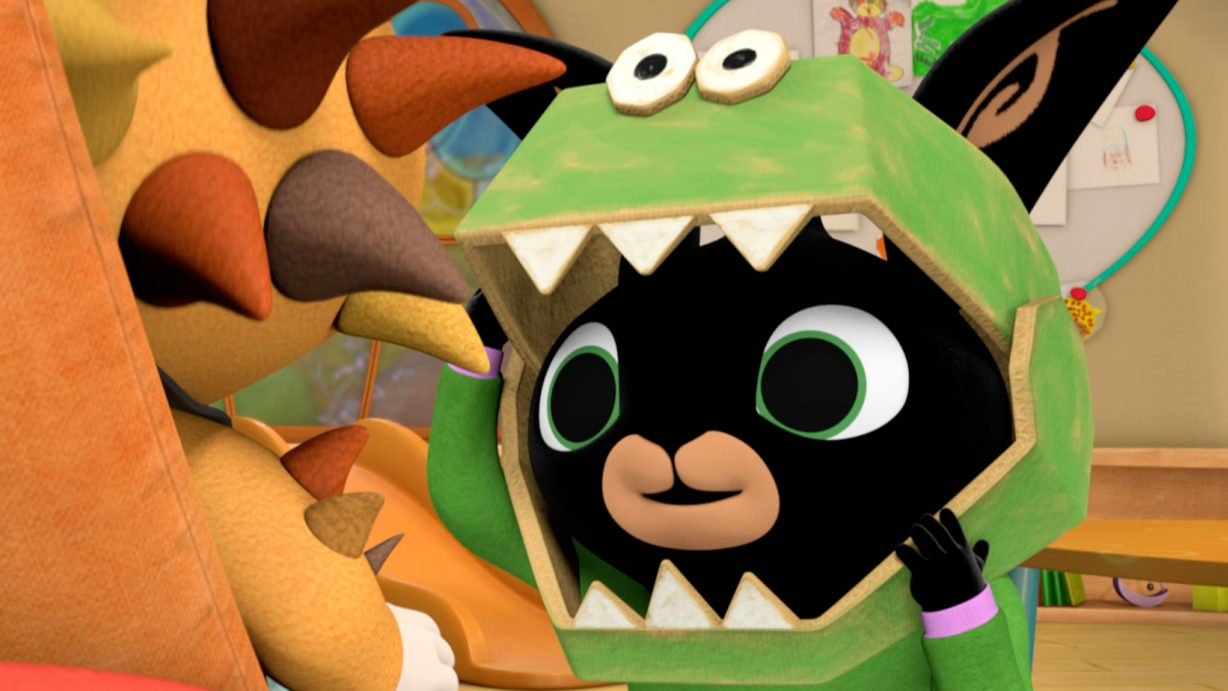
Managing fears around Halloween
How to Manage Fear and Excitement at Halloween
By Prof. Sam Wass
Halloween can be an overwhelming time for little ones. For us as adults, it is very easy to tell what’s true and what’s made up. But young children, who don’t have as much knowledge of the world, can’t tell so easily what’s true and what’s not.
In the episode ‘Halloween’, Bing dresses up as Biteysaurus for a costume party at Coco’s house. Bing and his friends are playing in their costumes, but Bing gets a bit too intense with Coco’s younger brother Charlie and makes him cry. Talking with Flop, Bing realises that Charlie is upset because he doesn’t know that Biteysaurus isn’t real. He goes back, shows Charlie that it’s just a costume, and then they all go out happily together.
Two great tips to manage high emotions around Halloween are to try to make clear to children what is and isn’t real and to be aware of how quickly fun can become overwhelming for little ones.
Make clear what is real and what is not
Young children are learning every day, from the grown-ups in their lives, books and television. However, in books and on television, they learn about things that are both real, like elephants, and some which aren’t, like unicorns. Normally it doesn’t say in the book what’s real and what’s not - so how are they supposed to tell the difference? It’s no wonder that truth and make-believe can get mixed up for some young kids.
It can be stressful to not have secure knowledge of the world to fall back on. When I open my door at Halloween and see what looks like a human-sized dinosaur, standing there on my doorstep, saying ‘Trick or Treat!’, I understand straight away that it must be a human dressed up as a dinosaur because I know that dinosaurs are extinct. But for a young child there’s no reason to believe that it isn’t actually a dinosaur. And if it’s going ‘rargh’ at you, then you might be in real danger! One piece of prior knowledge - that I know dinosaurs are extinct - is fundamentally changing how I react to events in real time.
When you are reading a book or watching television with your child, try to make it clear to them what is made up and what is real- even when the story doesn’t. If children do not understand what is real and what is made up in the world, then they don’t know what’s actually dangerous and what’s not. They learn how to react to things by watching how you react to them. Children’s lack of prior knowledge of the world can explain why they can get so much more upset about things than we do – which explains why it’s important to contextualise, and to help children learn truth from reality.

Prof. Sam Wass
If children do not understand what is real and what is made up in the world, then they don’t know what’s actually dangerous and what’s not.
Be aware of the proximity of laughter to fear
In the Bing episode ‘Halloween’, initially Charlie is laughing, and playing along with Bing – but then suddenly it all gets too much and he shifts from laughing straight into crying. As adults, we think of laughter and crying as at opposite ends of the spectrum.
But in fact, most psychologists would readily recognise that they’re closely related. Some of the classic theories about humour say that, when something is mildly unexpected or intense, we laugh at it (even as adults we laugh at things that shock us slightly). But then when something is too unexpected or too intense, we don’t like it – which, for children, makes them cry. If you’ve got kids at home who find Halloween a little bit too intense and scary, then this can be a great way to think about being scared. It’s not that ‘scary is bad’, and that we want to run away from scary to have a big cuddle. It’s that being a little bit scared is fun, but being too scared is not fun. If things get too much, then we just need to calm down and de-intensify a little bit, and things will go back to being fun. Children’s emotions are always real, but they can change quickly. If fun shifts to scary, you can often shift it back again.

Prof. Sam Wass
It’s not that ‘scary is bad’, and that we want to run away from scary to have a big cuddle. It’s that being a little bit scared is fun, but being too scared is not fun.
Download a printable version
About the contributor
Professor Sam Wass (www.profsamwass.com) studied at Oxford University, London, and Cambridge University, and currently runs the BabyDev Lab (www.uelbabydev.com) at the University of East London. Sam's research is funded by Research Councils UK, the European Research Council, and Medical Research Council and others to study child psychology and child brain development during the early years. His speciality is on concentration and stress during early childhood. He works typical and neurodiverse populations, including children ADHD, Autism, anxiety and other neurodiverse groups. He works regularly with commercial organisations including Melissa & Doug and LEGO, and as a consultant with early years groups including Fennies Nurseries. Sam also appears regularly in the media as an expert in child development, including in the multi-award-winning Channel 4 series The Secret Life of 4- and 5-Year-Olds.
Prof Sam Wass, Professor of Early Years Neuroscience
- Web: UEL Baby Development Lab
- Web: www.profsamwass.com
- Instagram @profsamwass/@uelbabydevlab
- Twitter: @profsamwass/@UEL_BabyDevLab
- Facebook: UEL BabyDev Lab







